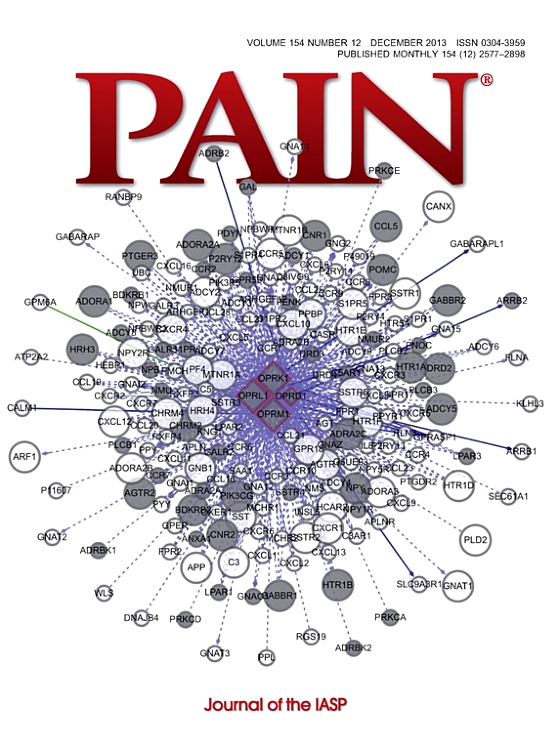退行性颈椎病减压后慢性疼痛:个体参与者数据的汇总轨迹分析。
IF 5.5
1区 医学
Q1 ANESTHESIOLOGY
引用次数: 0
摘要
疼痛是影响退行性颈椎病(DCM)患者生活质量的重要因素。与慢性疼痛相关的轨迹和因素了解甚少。DCM患者来自AO脊柱脊髓型颈椎病(CSM)-北美、CSM-国际和CSM- protect研究的统一数据集。术前、6个月、12个月和24个月随访时,采用颈部残疾指数疼痛强度(NDI-PI)评分前瞻性收集疼痛评分。患者术前疼痛分为3组:重度疼痛(NDI-PI≥3)、中度疼痛(NDI-PI = 2)和轻度疼痛(NDI-PI≤1)。基于术后24个月NDI-PI评分,潜类轨迹建模将患者分为不同的轨迹。在952例患者中,32% (n = 305)的患者术前表现为重度疼痛,29.1% (n = 277)为中度疼痛,38.9% (n = 370)为轻度疼痛。术后出现严重疼痛的患者遵循(1)完全缓解(n = 128, 42.0%),(2)中度恢复(n = 105, 34.4%)或(3)边缘恢复(n = 72, 23.6%)的轨迹。出现中度疼痛的患者遵循以下轨迹:(1)疼痛演变(n = 22, 7.9%),(2)边缘恢复(n = 104, 37.6%),(3)完全缓解(n = 151, 54.5%)。表现为轻微疼痛的患者遵循2个轨迹:(1)无疼痛进展(n = 329, 88.9%)和(2)中度疼痛进展(n = 41, 11.1%)。24个月时,36.1% (n = 344)的患者以慢性疼痛结束。DCM的术前疼痛可分为不同的亚群,其临床病程也有根本的不同。手术与疼痛性DCM的疼痛减轻的长期轨迹有关。然而,一些患者会经历持续的慢性疼痛。本文章由计算机程序翻译,如有差异,请以英文原文为准。
Chronic pain after decompression for degenerative cervical myelopathy: a pooled trajectory analysis of individual participant data.
Pain is a significant contributor to quality of life for those living with degenerative cervical myelopathy (DCM). The trajectories and factors associated with chronic pain are poorly understood. Patients with DCM were identified from a harmonized data set of the AO Spine Cervical Spondylotic Myelopathy (CSM)-North America, CSM-International, and CSM-Protect studies. Pain scores were prospectively collected using the Neck Disability Index pain intensity (NDI-PI) score preoperatively and at 6-month, 12-month, and 24-month follow-up. Patients were categorized into 3 groups of preoperative pain: severe pain (NDI-PI ≥3), moderate pain (NDI-PI = 2), and minimal pain (NDI-PI ≤1). Latent class trajectory modeling classified patients into distinct trajectories based on their NDI-PI score over 24 months postoperatively. From a total of 952 patients, 32% of patients (n = 305) presented preoperatively with severe pain, 29.1% (n = 277) with moderate pain, and 38.9% (n = 370) with minimal pain. Postoperatively, patients presenting with severe pain followed (1) complete resolution (n = 128, 42.0%), (2) moderate recovery (n = 105, 34.4%), or (3) marginal recovery (n = 72, 23.6%) trajectory. Patients presenting with moderate pain followed the trajectories of (1) pain evolution (n = 22, 7.9%), (2) marginal recovery (n = 104, 37.6%), and (3) complete resolution (n = 151, 54.5%). Patients presenting with minimal pain followed 2 trajectories: (1) no pain evolution (n = 329, 88.9%) and (2) moderate evolution (n = 41, 11.1%). At 24 months, 36.1% (n = 344) of all trajectories ended in chronic pain. Preoperative pain in DCM can be classified into distinct subpopulations with fundamentally differing clinical courses. Surgery is associated with long-term trajectories of pain reduction in painful DCM. However, some patients experience persisting chronic pain.
求助全文
通过发布文献求助,成功后即可免费获取论文全文。
去求助
来源期刊

PAIN®
医学-临床神经学
CiteScore
12.50
自引率
8.10%
发文量
242
审稿时长
9 months
期刊介绍:
PAIN® is the official publication of the International Association for the Study of Pain and publishes original research on the nature,mechanisms and treatment of pain.PAIN® provides a forum for the dissemination of research in the basic and clinical sciences of multidisciplinary interest.
 求助内容:
求助内容: 应助结果提醒方式:
应助结果提醒方式:


